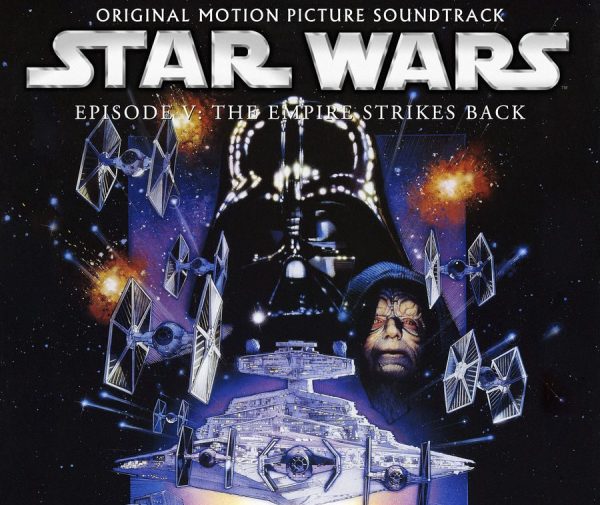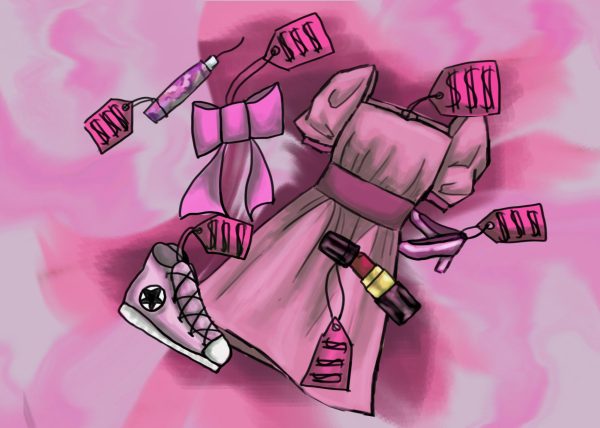Metal health: Music for a chaotic world
I got into metal when I was in eighth grade, the crux of my incessant quest to simultaneously embrace the frigid winds of teenage rebellion and not be like “other” girls. I ended up enjoying the grimy, oppressive, raw sound of this subgenre of music, developing a twisted, insatiable attraction to its relentlessly brutal style.
Early metal music, like Deep Purple and Motörhead, was characterized by brute force: sleazy, distorted riffs, aggressive blast beats, chaotic drumming. Lyrical themes encompassed the fringes of socially acceptable discourse, embodying the messages of individuality and nonconformity that heavy metal music strived to create. Whether it’s blatant occultism or grisly imagery, metal bands used sensationalism and shock value as weapons against mainstream music culture. Such gratuitous themes have exiled metal to the depths of ostracization and taboo.
Metal has spawned an ecosystem of subgenres, each incorporating a unique style or theme. Death Metal, for example, highlights guttural growls, punk-derived blast beats, intricate riffs and a general emphasis on gory lyrical content.
Black Metal embraces a more primitive, muzzled sound, using lo-fi production, tremolo picking, ear-piercing shrieks, and bone-chilling riffs to craft a frosty and abrasive atmosphere. There exists a trove of metal subgenres and microgenres and niche sounds, but the original message of individualism found in the squalid sound of the ’70s metal scene still persists.
Metal not only pushes the boundaries of music, it eviscerates them and crafts its own artistic sphere with its own rules. It is an awe-inspiring masterpiece of a genre; the tandem between musical brilliance and the rawest, most primal regions of the soul. The gradual, intense releases of passion that are somehow conducive to amplifying our emotions. Before you jump into brutal death or slam, here are some essential metal albums that are more accessible and sonically pleasing for the curious or uninitiated.
Black Sabbath, “Paranoid” (1970)
The pinnacle of metal and everything the genre embodies, this irreplaceable classic has earned its position as the framework for heavy metal, with its dark, dripping riffs. “Paranoid” transcends technical brilliance and eclipses into the dimension of unencumbered anger, of conveying raw emotion through music. Black Sabbath, a juggernaut of heavy metal, pioneered the concept of music as a form of catharsis, and “Paranoid” is the masterful result of the group’s musical innovation.
Type O Negative, “World Coming Down” (1999)
This dreary, sobering album is the crux of Type O Negative’s discography, a now-disbanded gothic doom band from the festering wounds of Brooklyn. “World Coming Down” is steeped in an atmosphere of raw existential nihilism, with its long, monochromatic dirges of doom and rock, bitterly sardonic melodies, the introspective, lush baritone of frontman Peter Steele. The album deconstructs stereotypes of goth to craft a cathedral of lurching riffs and lethargic, dissonant notes that flawlessly convey the agonizing hopelessness of Steele’s own depression. “World Coming Down” is, quite simply, a metal masterpiece.
Ulver, “Bergtatt” (1995)
This enchanting debut from Ulver, an experimental Norwegian collective, harmoniously synthesizes the spheres of gentle medieval folk interludes and enthralling, atmospheric black metal to create an ethereal sonic hybrid. The emotional narrative of a Danish maiden undulates throughout “Bergtatt,” from torrid aggression to sweet tranquility to melancholy and apprehension. The quintessence of romantic black metal, this album harbors an evocative intensity that transfers you into lush worlds of mystical fantasies and fairytales. Ulver incorporates ferocious black metal into the bewitching crux of “Bergtatt,” employing blistering tremolo riffs, delicate neofolk melodies and haunting, angelic chants to craft a breathless composition of dark and captivating atmosphere.
I ended up enjoying the grimy, oppressive, raw sound of this subgenre of music, developing a twisted, insatiable attraction to its relentlessly brutal style.
— Indrani Maitra
Katatonia, “Brave Murder Day” (1996)
Swedish gothic band Katatonia strips down music to its bare bones to create a fabric of masterful, sumptuous riffs that form the basis of “Brave Murder Day.” This album combines the raw ferocity of death metal and creeping, desolate tempos of doom to produce textured, vibrant melodies that create a wondrous atmosphere and leave one with a strange sense of complexity and despair.
Acid Bath, “When the Kite String Pops” (1994)
Vulgar, aggressive and utterly unstable, “When the Kite String Pops” is a maniacal sludge album that perfectly encapsulates the addicting sensory assault that is metal. Every track is flawless yet sonically volatile, swaying from a barrage of menacing death metal riffs to crooning, sultry folk ballads to sticky sludge melodies that reek of the sordid paranoia sprawling throughout Acid Bath’s industrial sound.
Megadeth, “Rust in Peace” (1990)
Amongst the excellent arsenal of thrash metal albums, “Rust in Peace” is the magnum opus. The frenzied sophistication of riffs imbue the album with an impulse, an intoxicating energy of breathless aggression. Dave Mustaine’s signature nasal vocals have a bizarrely appealing cadence that snarl their way throughout this thrashy triumph. Unencumbered by societal norms, the sociopolitical overtones intertwine themselves in not only the lyrical basis of the album, but the vigorous atmosphere as well. “Rust in Peace” is a classic of frantic virtuoso that will leave your metal validity undeniable and impenetrable.


















